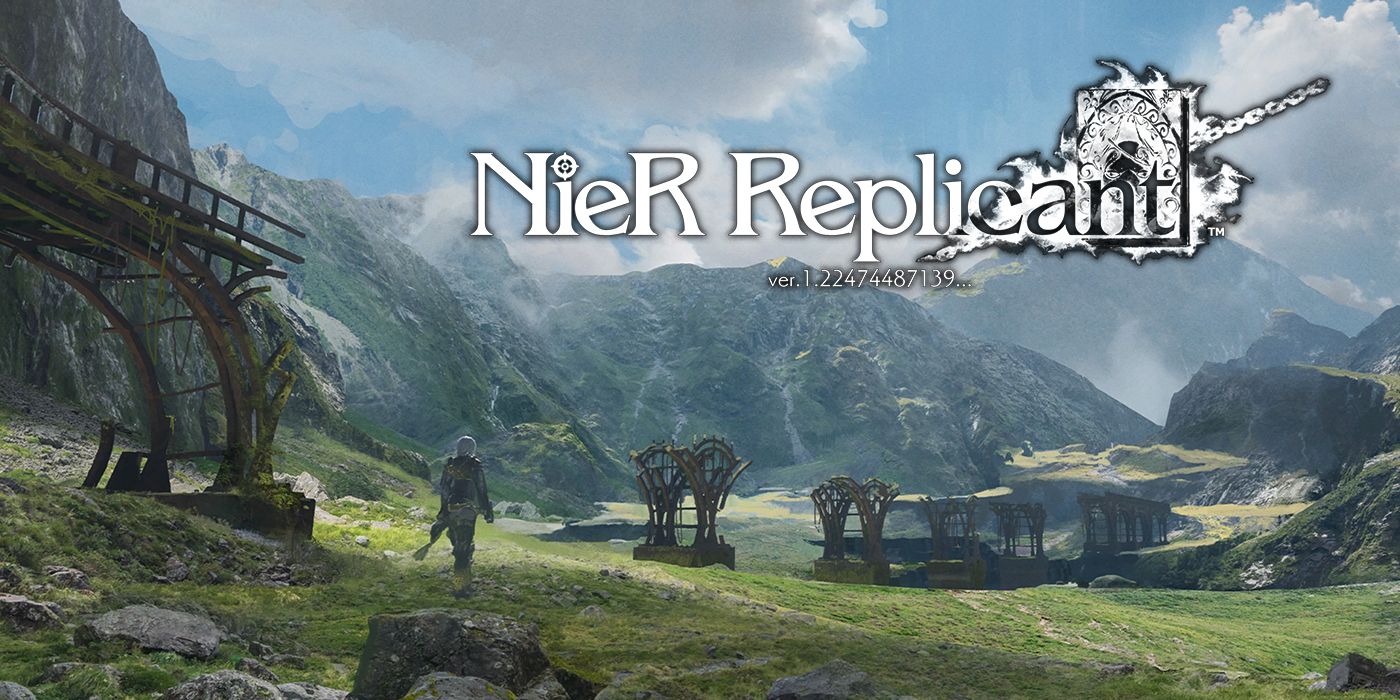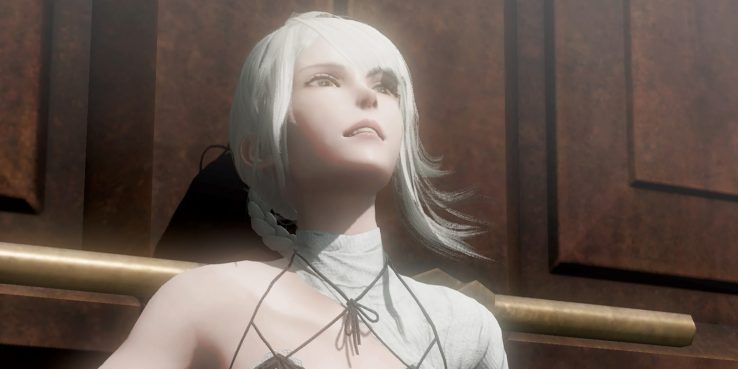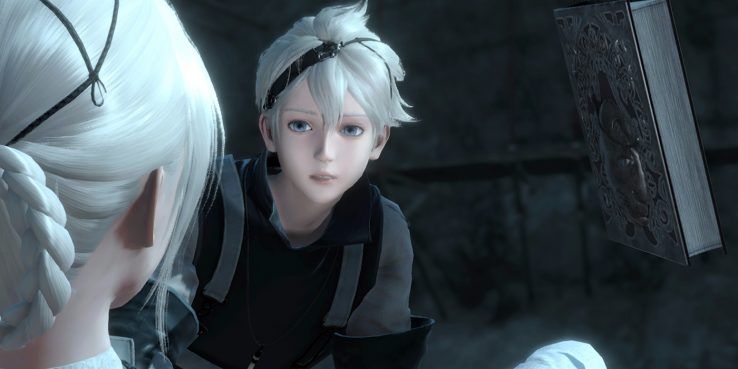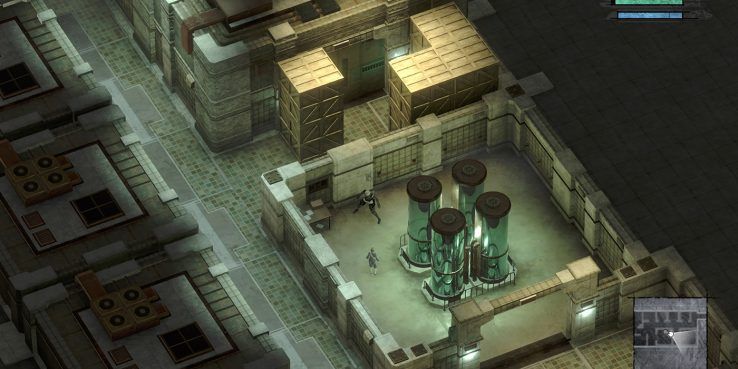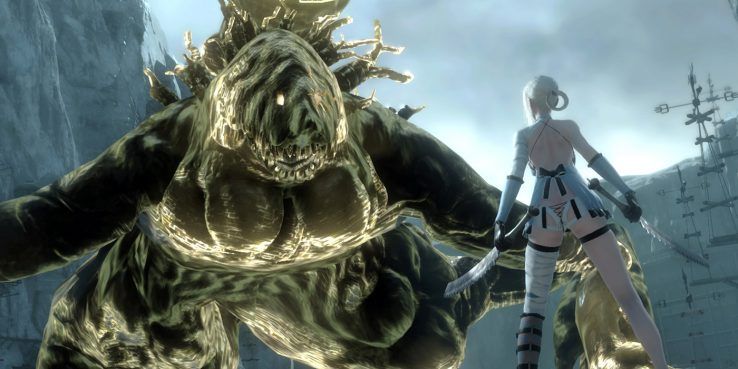A quick browse on social media will reveal that Toylogic’s NieR Replicant ver.1.22474487139 is a game whose pedigree confuses many people. A spin-off of the Drakengard series and published by Square Enix, Replicant the remaster is actually the fourth iteration of what is essentially the same game. In 2010, the original NieR Replicant released in Japan for PlayStation 3, with an alternative version called NieR Gestalt launching on Xbox 360. Outside of Japan, Gestalt was released as simply NieR. According to Yoko Taro, the game’s creative director, this latest release is neither a remaster nor a remake, but rather an update, version 1.22474487139.
Those who pick up NieR Replicant because they are fans of its sequel Nier Automata will likely be satisfied, as the two games have comparable overarching themes, gameplay, and – sharing a writer, Hana Kikuchi – intriguing stories. Replicant’s camera and battle system have even been reworked to feel more streamlined and similar to that of Automata. But it must be remembered that the original NieR Replicant pre-dates Automata by nearly a decade, and the overall feel of the game reflects that, despite the tweaks.
The soundtrack of NieR Automata earned multiple awards, and the first-rate score of Replicant hails from one of the same composers, Keiichi Okabe, who also worked on Tekken and Drakengard. The music in Replicant ver.1.22474487139 has been re-recorded, but simply to make it sound cleaner and sharper. It will still be fully familiar to fans of the original soundtrack, as will a few of Nier Replicant's English voice actors, some of whom have reprised their roles from the first game with an updated script.
NieR Replicant tries to be inventive, and succeeds in many ways. The game’s basic mechanics do not introduce anything that hasn’t been seen before in countless RPGs over the years. Yet the gestalt, one might say, of what Replicant offers distinguishes it in many of the areas where it counts most. Much of this comes through by way of oddities – the story is a bit odd, the bosses are a bit odd, but in an acceptable and perhaps even daring way.
Although the main narrative is very linear, it manages to keep players from feeling constrained, thanks to the nearly 70 side quests that grant the freedom to stray from the predetermined path for quite a while. The game can be beaten in about 20 hours, but a completionist might easily spend 80 hours fishing, tending the garden, completing quests, and farming materials for weapon upgrades.
The story’s foundation is the overused premise of a protagonist who discovers he is special and sets out on a quest to save the world. But from that foundation, Replicant veers into a tale that is distinctive enough to become one of the game’s strongest points. Although it starts off slow and may lose players who expect to get drawn in immediately, those who stick it out will be gifted with a bold and creative story that breaks away from standard RPG fare. It evokes emotion, from sorrowful plot twists to amusing banter, and also introduces some interesting and charismatic characters. And, of course, one of Replicant’s possible endings is well known in the gaming world for its inventiveness and finality.
One noticeable difference between Replicant and NieR as it was released outside of Japan is that the protagonist is no longer Dad Nier, an older man on a quest to save his ailing daughter. The main character is now a teenage boy whose young sister is dying from a mysterious illness. While seeking a cure, he encounters a talking mystical tome called Grimoire Weiss, who grants him magical powers that are the key to curing the terrible disease. Other intriguing characters join the party like Kainé, a standoffish woman with a powerful secret, and the blind boy Emil, who undergoes a traumatic transformation after recovering his suppressed memories.
Hand in hand with the game’s strengths are weaknesses that cannot be ignored. Replicant’s biggest sin is the tedium that pervades the entire game. Navigating through towns with unnecessarily convoluted and nonsensical layouts, weapon upgrades that require hours of mindless farming in NieR Replicant's dungeons, and looping music that makes even a beautiful soundtrack begin to grate on the ears. Simply moving from location to location becomes monotonous because fast travel doesn’t unlock until after the game’s halfway point.
This isn’t a negligible problem; it degrades the entire experience. While many aspects of the game shine and even surpass other RPGs, Replicant takes repetition and grinding to a new level as well. Even uncovering the game’s true ending and full story is an ordeal, because unlocking it requires multiple playthroughs and the fulfillment of specific prerequisites. Added to that is the fact that the majority of the game’s side quests are delivery or fetch quests of the “collect 10 of this and 20 of that” variety, requiring even more farming that will soon transform any eager player into a heavy-lidded automaton. Yet at the same time, much of the immersion into the game world occurs by doing side quests and interacting with NPCs.
The repetition carries over to enemy design as well. The primary enemies in the game are known as Shades, spawned from the same darkness that has spread a deadly illness among the land’s inhabitants. Though they vary in size and attack pattern, run-of-the-mill enemies all share a similar look and style. Even when the game progresses to a more “difficult” phase, many of the enemies are simply given armor to differentiate them from their weaker counterparts. On the other hand, boss designs and fights are for the most part innovative and gratifying, with some even earning a jaw drop or exclamation at their impressive presentation.
The highly regarded combat of NieR Automata influenced some of the changes introduced in the Replicant remaster, with battle animations reworked and the entire system tweaked for a more fluid experience. However, gamers who play for story will be more satisfied than those searching for challenging combat that requires skill to master. Despite the overhaul, fighting in Replicant remains somewhat simplistic and consists primarily of button mashing, with combos occurring automatically. Even so, while not entirely innovative, the combat remains engaging, and a handful of spells add a welcome bit of flavor as players bash endlessly at enemies with sword or spear.
One NieR Replicant gameplay mechanic that showed potential is the ability to kite Shades into the light, which weakens and can even kill them. The game’s weather regularly changes from overcast to sunny and, when the sky is cloudy, some areas will be overrun with Shades busily killing the local fauna. When the sun shines brightly, the Shades make themselves scarce. It wasn’t often that a location had both sunlight and a shadowed area where Shades would spawn. So, unfortunately, this promising feature gets underutilized in the game and is rarely viable.
NieR Replicant overall is a successful remaster, with a bit of spit and polish improving many facets of the original game, but with some of the negatives unfortunately carrying over as well. The end result is an action RPG that will keep most players entertained for many hours, as the story, combat, and characters outweigh the boredom of Replicant’s sometimes repetitive gameplay.
NieR Replicant ver.1.22474487139 releases on April 23 for PC, PS4, and Xbox One. Game Rant was provided a PS4 code for this review.

